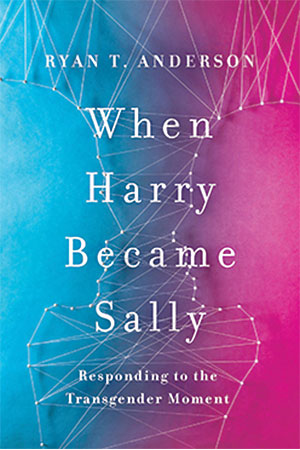Subtotal: $
Checkout-

Our Task Is to Live
-

To Be Plucked by a Strange or Timid Hand
-

The Beguines
-

Carry Me
-

The Soul of Medicine
-

Readers Respond: Issue 17
-

Family and Friends: Issue 17
-

The Hunter
-

Beyond Racial Reconciliation
-

Science and the Soul
-

Money-Free Medicine
-

Patient Perspective
-

On Being Ill
-

On Eternal Health
-

Adirondack Doctor
-

Christ the Physician
-

What’s a Body For?
-

Begotten Not Made
-

The End of Medicine
-

Perfectly Human
-

Let Me Stand
-

All Sorts of Little Things
-

The Measure of a Life Well Lived
-

Siegfried Sassoon’s “Before the Battle”

Dopesick
Beth Macy
(Little, Brown)
In Dopesick, journalist Beth Macy gives the opioid epidemic a human face, but not at the expense of historical and scientific context. This epidemic, she argues, can be traced to the greed of one pharmaceutical company. Purdue Pharma’s release of OxyContin in 1996 led to an epidemic of iatrogenic (doctor-caused) opioid addiction, the third in US history. The first epidemic had led to the deaths of countless Civil War veterans to morphine; the second had killed off thousands of middle-class housewives before heroin was banned in 1924, twenty-six years after its release as an over-the-counter drug. But Purdue couldn’t have succeeded without thousands of unscrupulous doctors and sales reps who cashed in at the expense of the most susceptible. OxyContin’s arrival also coincided with patients becoming healthcare consumers and pain becoming “the fifth vital sign,” to be avoided at all costs. Not treating pain was tantamount to abuse, preached the new medical experts funded by Big Pharma. It wasn’t long before courts and prisons were overwhelmed as addicts started stealing from their families and neighbors and switching to heroin, not seeking a high but simply to stave off the “dopesickness” of withdrawal.
Treatment, regulation, education, and new criminal justice approaches are all urgently needed, but it will take more than that to stem the great tide of despair of which this scourge is but a symptom.
Already a subscriber? Sign in
Try 3 months of unlimited access. Start your FREE TRIAL today. Cancel anytime.
Natural Causes
Barbara Ehrenreich
(Twelve)
Our bodies don’t always function as a harmonious whole. Macrophages, those good cells in our immune system that eat pathogens, also aid and abet the spread of cancer and have been implicated in arthritis, Alzheimer’s, and diabetes. “The fire department is indeed staffed by arsonists,” writes Barbara Ehrenreich (Nickel and Dimed). So, despite our efforts, we’re going to die.
At 76, Ehrenreich knows she’s old enough to die of “natural causes” – and she isn’t about to waste her remaining years denying herself butter and wine or subjecting herself to invasive medical treatment to stave off the inevitable. With wit and verve, she takes aim at excessive cancer screening, the medicalization of childbearing, the fitness and wellness industries, fad diets, faux-Buddhist mindfulness, self-help gurus, and much more. Medical professionals may find some of her generalizations unfair, but her main indictment is reserved for us, consumers in a culture obsessed with self.
The self has supplanted God as the object of our worship and replaced the soul as the essence of our being. An atheist herself, Ehrenreich senses that it’s a sorry substitute, but fails to offer a way out. For her, it’s enough to die in a world seething with life, knowing the blackbirds will go on singing without her. As consolation many will find this rather thin, and Ehrenreich’s solutions likewise are hardly satisfying (unless you count psychedelic drugs that temporarily suppress the selfish zone of your brain). Yet Ehrenreich is an acute diagnostician of our society’s pathologies, and her book is as serious as it is entertaining.
Already a subscriber? Sign in
Try 3 months of unlimited access. Start your FREE TRIAL today. Cancel anytime.
When Harry Became Sally
Ryan T. Anderson
(Encounter)
In this book, Ryan T. Anderson explores the arguments at the heart of the growing confusion about gender identity and sexuality. Acknowledging the real psychological suffering that people with gender dysphoria experience, he describes how that suffering can be increased by mistaken medical treatment, and addresses the social changes that gender-theory activists are demanding.
To Anderson, there are basic contradictions in the beliefs that these activists promote. They believe that the real self is fundamentally separate from the body – that it’s possible for a boy to “really” be a girl – yet at the same time they insist that the body matters after all, since it’s crucial to medically transform it to match one’s felt identity. Similarly, activists tie authentic gender identity to stereotypically male and female activities while also claiming that gender is an artificial and fluid construct. What’s more, this artificial construct trumps the biological realities that humans have always taken as markers of male and female. As a result, those struggling with their gender identity may be prescribed radical and invasive “therapies”: puberty blockers, cross-sex hormones, and surgeries.
Anderson calls for compassion for those who suffer from gender confusion. At the same time, he points out that sex is inscribed into our bodies, down to the DNA in every cell. Being male or female is thus not something we can choose or change; surgery cannot replace chromosomes. Sex, Anderson writes, “is a bodily, biological reality, and gender is how we give social expression to that reality. Gender properly understood is a social manifestation of human nature, springing forth from biological realities, though shaped by rational and moral choice.” Our bodies are part of who we are, not something external to ourselves in which we find our real selves trapped.
Already a subscriber? Sign in
Try 3 months of unlimited access. Start your FREE TRIAL today. Cancel anytime.
The Hidden Half of Nature
David R. Montgomery and Anne Biklé
(W. W. Norton)
Geologist David R. Montgomery and his wife, Anne Biklé, a biologist, collaborate in this fascinating book to reveal the uncanny parallels between healthy soil and healthy bodies. Couched as a memoir, it records their personal journey rehabilitating a chemically devastated lawn into a thriving vegetable garden while Anne recovers from cancer. Research continues to expose the role of the “hidden half of nature,” the microbial world that sustains life on our planet, in the soil and in our bodies, which are not just us but also a complex community of microbes we host – their cells outnumber ours at least three to one. Eighty percent of our immune system is the work of these guests in our intestine and colon, where over a thousand unique species live and work for us. An awareness of these dependencies is game-changing, as we come to realize that so much of what we commonly do is deadly to what maintains life; not only pesticides and herbicides but also sanitizers, food processing, and antibiotics need a closer look. We have a lot to learn, and here are two enthusiastic teachers.
Already a subscriber? Sign in
Try 3 months of unlimited access. Start your FREE TRIAL today. Cancel anytime.



































